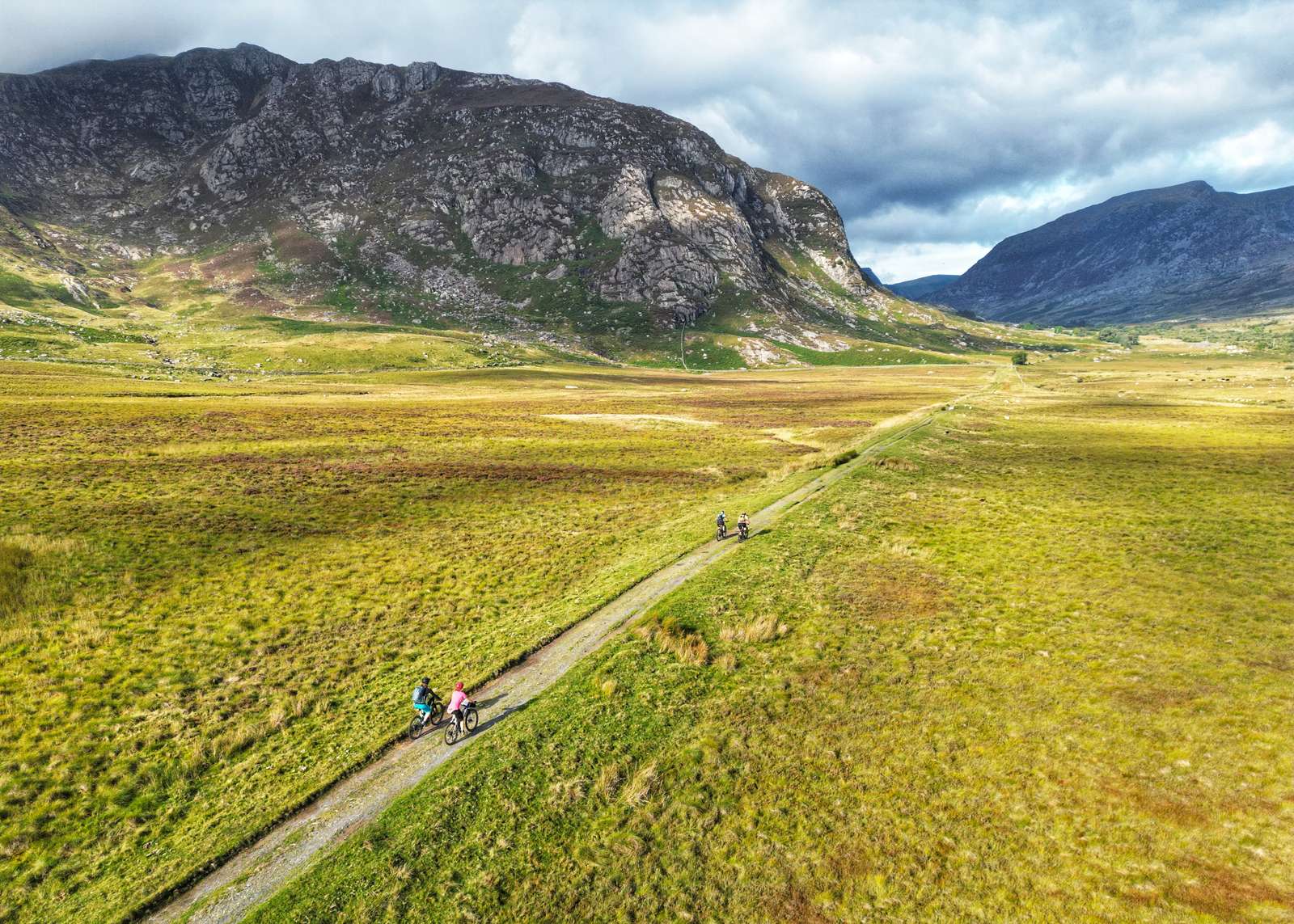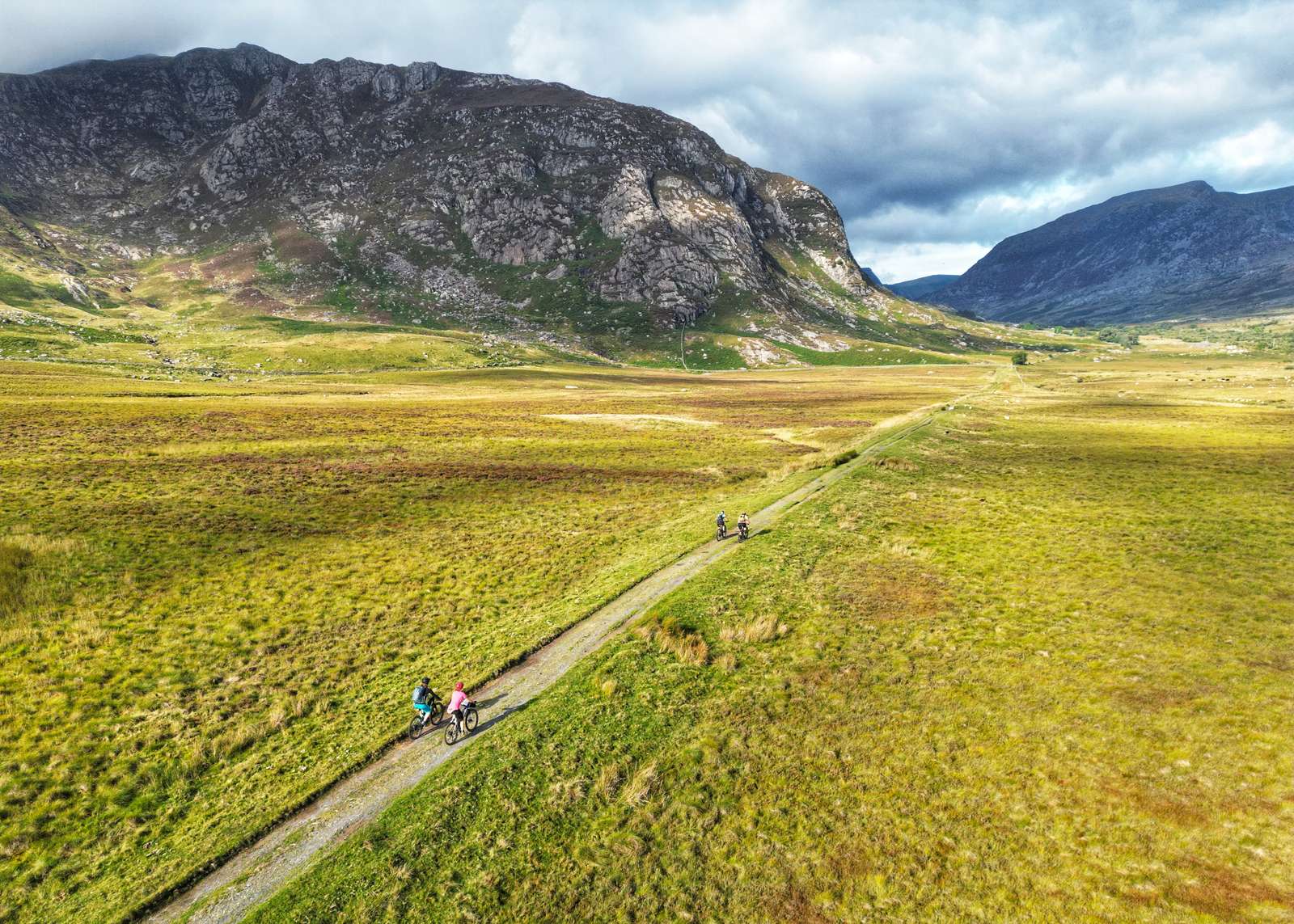
Cycling UK’s newest cycling route, Traws Eryri (pronounced ‘trouse eh-ruh-ree', and meaning 'Trans Snowdonia'), is a 122-mile (200km) off-road cycling trail that takes you through the rugged heart of Snowdonia.
Beginning in the mid-Wales market town of Machynlleth, you’ll head north across Eryri National Park until you reach the coastal town of Conwy. With a combined 4,000 metres of ascent, it’s a route that requires resilience (and strong legs), but offers vistas of Snowdonia’s wild beauty, far from the tourist gaze.
Hopefully Traws Eryri will allow people to discover parts of the park they hadn’t thought to visit before...
“The idea was about going beyond the trail centres,” explains Sophie Gordon, Campaigns Policy Officer at Cycling UK. “Hopefully Traws Eryri will allow people to discover parts of the park they hadn’t thought to visit before. It’s a really popular, busy national park, but a huge amount of that is concentrated around Yr Wyddfa [Snowdon]. Go outside of that, and further south towards mid Wales, and you can go most of the day without seeing anybody.”
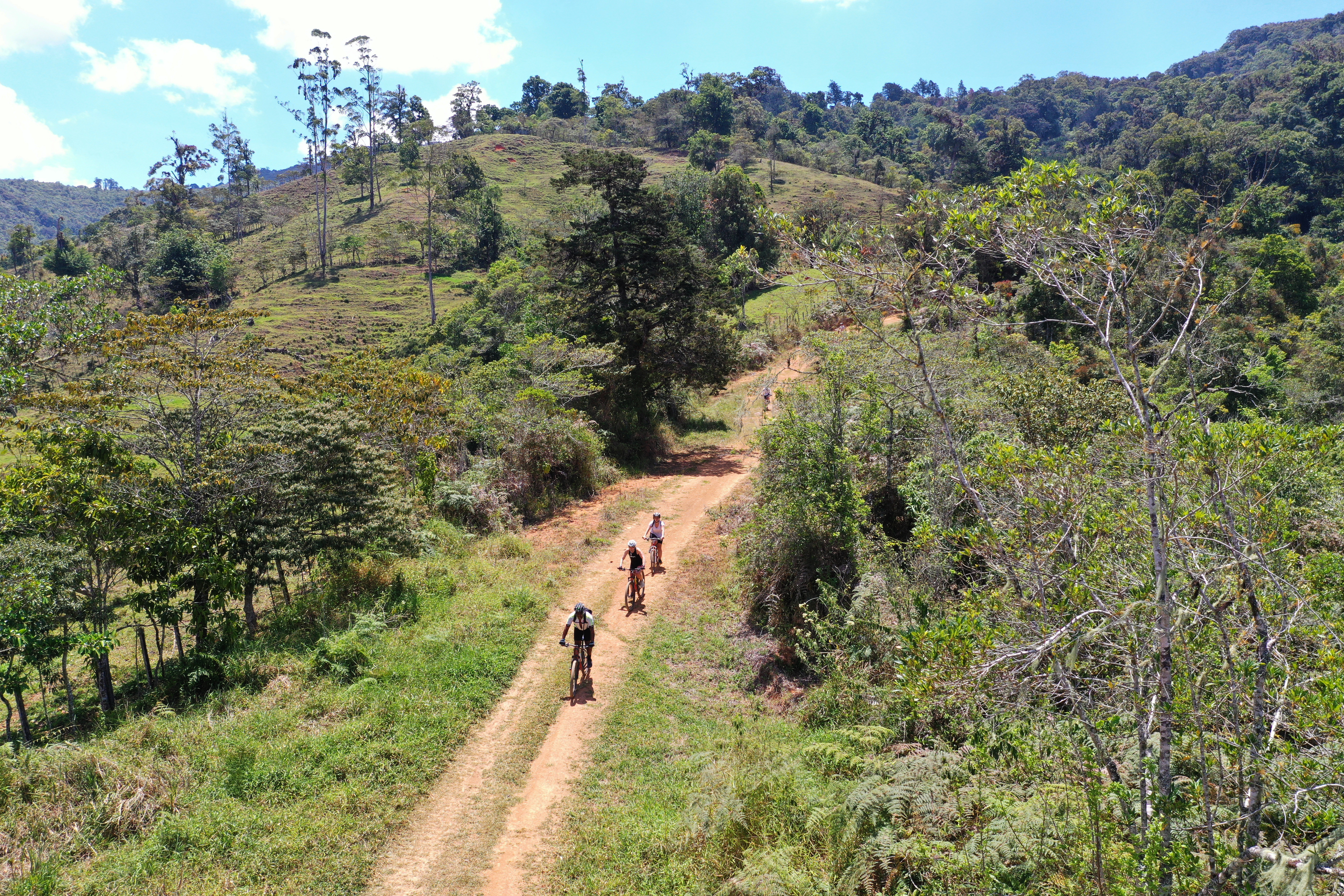
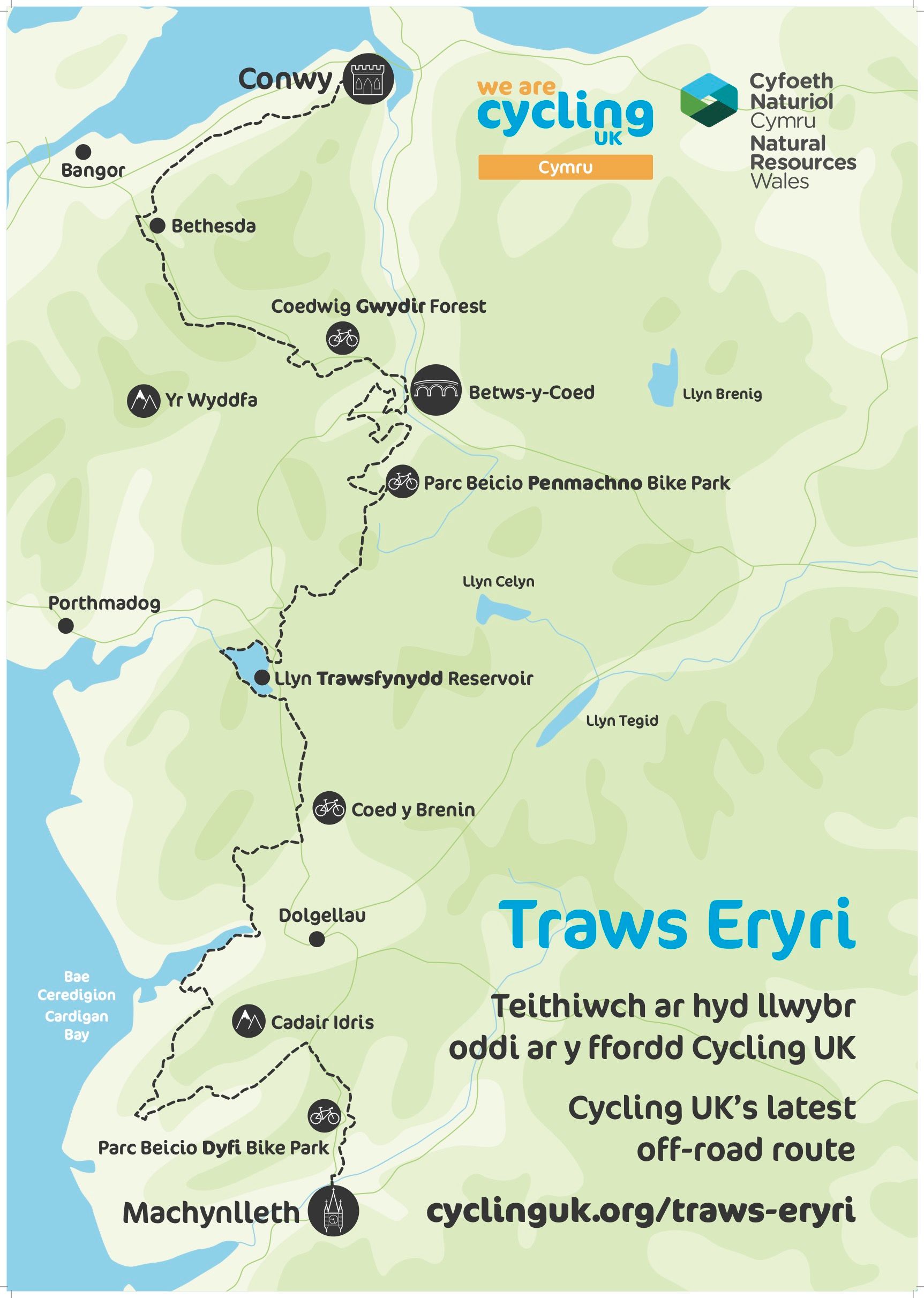
The route connects existing trails - bridleways, byways and single track - to create one new, continuous route. It was a time-consuming process, made more difficult by different access regulations.
You’ll want those really low gears - there’s lots of very Welsh 20% gradients...
“It’s frustrating, trying to plot it out on the map - you always find these little connections that are really difficult to link up,” Sophie says. “Like a bridleway that suddenly turns into a footpath in order to connect to a road. Or there might be a forest track that people ride on all the time, but it’s not an official right of way. So we had to do quite a bit of work finding out who the landowner was, and trying to get permission from them to include it on the route.”
The wait is worth it, though - Traws Eryri takes you through an astonishing diversity of landscapes, along a variety of different types of trail.
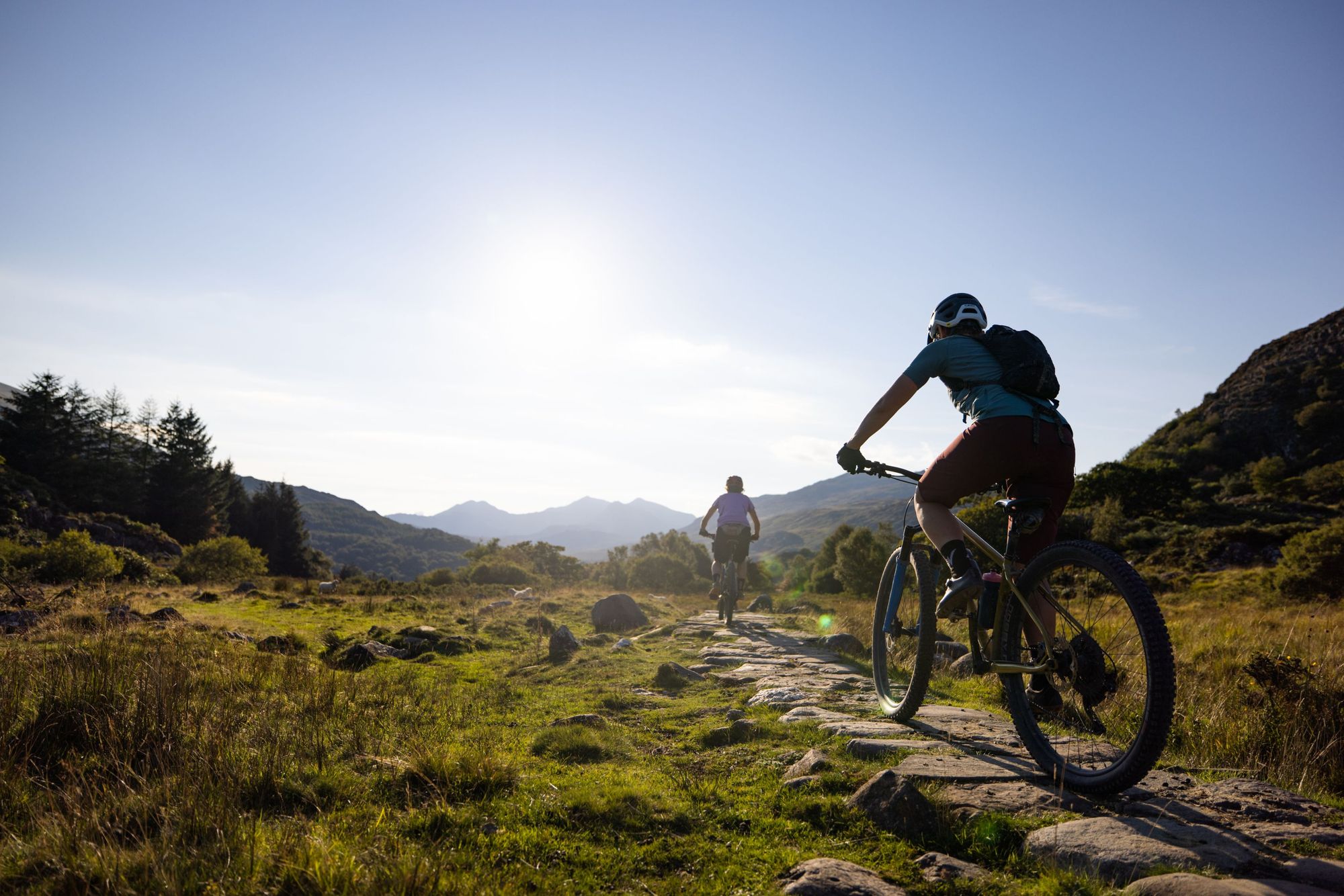
“You can be riding alongside tumbling rivers, between mossy banks bursting with ferns and deciduous trees in a temperate rainforest one minute, and then sailing down a slate doubletrack shouldered by purple heathers and gorse flowers the next,” Sophie says.
“Listen out for the 'glug glug' of ravens, and the most keen-eyed bikepackers may get the chance to see peregrine falcons and even rare choughs. In the many woodland areas are smaller birds such as redstart, pied flycatcher and wood warbler. Out on the more open hillsides, brown hares can sometimes be seen grazing, while around 1,000 mountain goats live in the national park.”
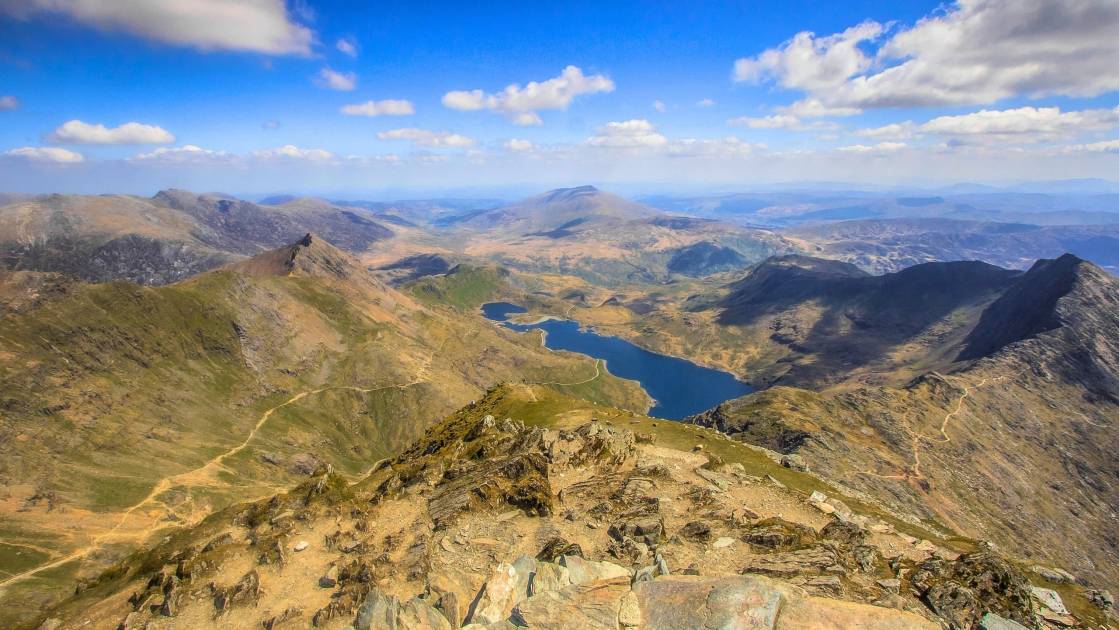
Beginning in Machynlleth in mid wales, you’ll cycle around Cadair Idris, before dropping down to the Mawddach Trail, which runs along the Mawddach Estuary and through the forest of Coed y Brenin, where you’ll pass through tall stands of western red cedar and Sitka spruce. It’s a popular spot for mountain biking - you can try out some of the singletrack trails or stick to the forest track. After this you’ll join the old Sarn Helen Roman road, and from there onto Trawsfynydd.
“It’s a really odd place - there’s this beautiful reservoir there, and then this hulking great old nuclear power station on the opposite shore,” Sophie says.
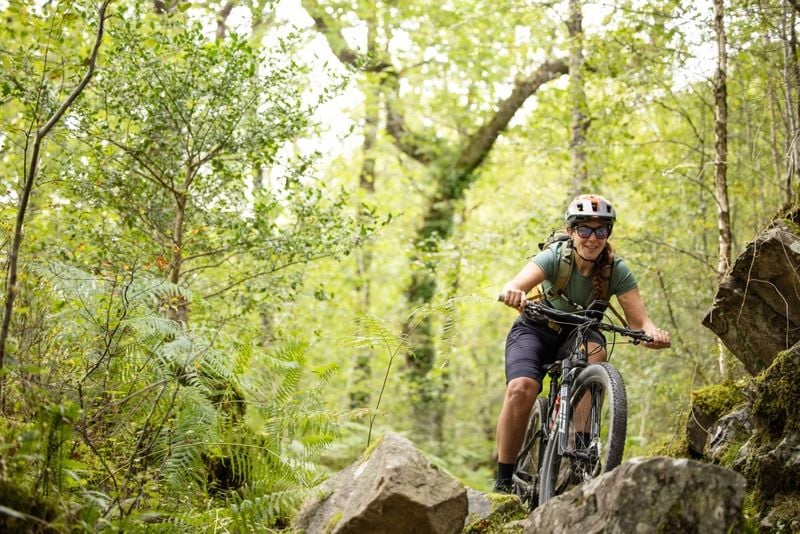
The trail proceeds from Trawsfynydd over to the popular town of Betws y Coed, and through the Gwydir Forest before heading to Capel Curig. One of the most scenic stretches takes you down the steep-sided, glacial Ogwen valley, where you have Tryfan on one side and the hulking Carneddau mountains on the other side. Continue onward, passing the old slate mines at Bethesda.
The bits I found really interesting, when we test rode it, were places where you can see how the landscape has been shaped over time by human activity...
“At this point, you think you’re nearly at the coast, and then we send you up over a really brutal hill to Conwy,” Sophie says. “But it’s a really beautiful part of the route - another old Roman road that runs across the moors.
“The bits I found really interesting, when we test rode it, were places where you can see how the landscape has been shaped over time by human activity. Slate mining was a massive industry in North Wales. At some points on the route you come over a hill and you’re looking down on this whole mined landscape, or riding past these towering piles of slate. You can appreciate in a very physical way how big this industry was, and the impact that it’s had.”
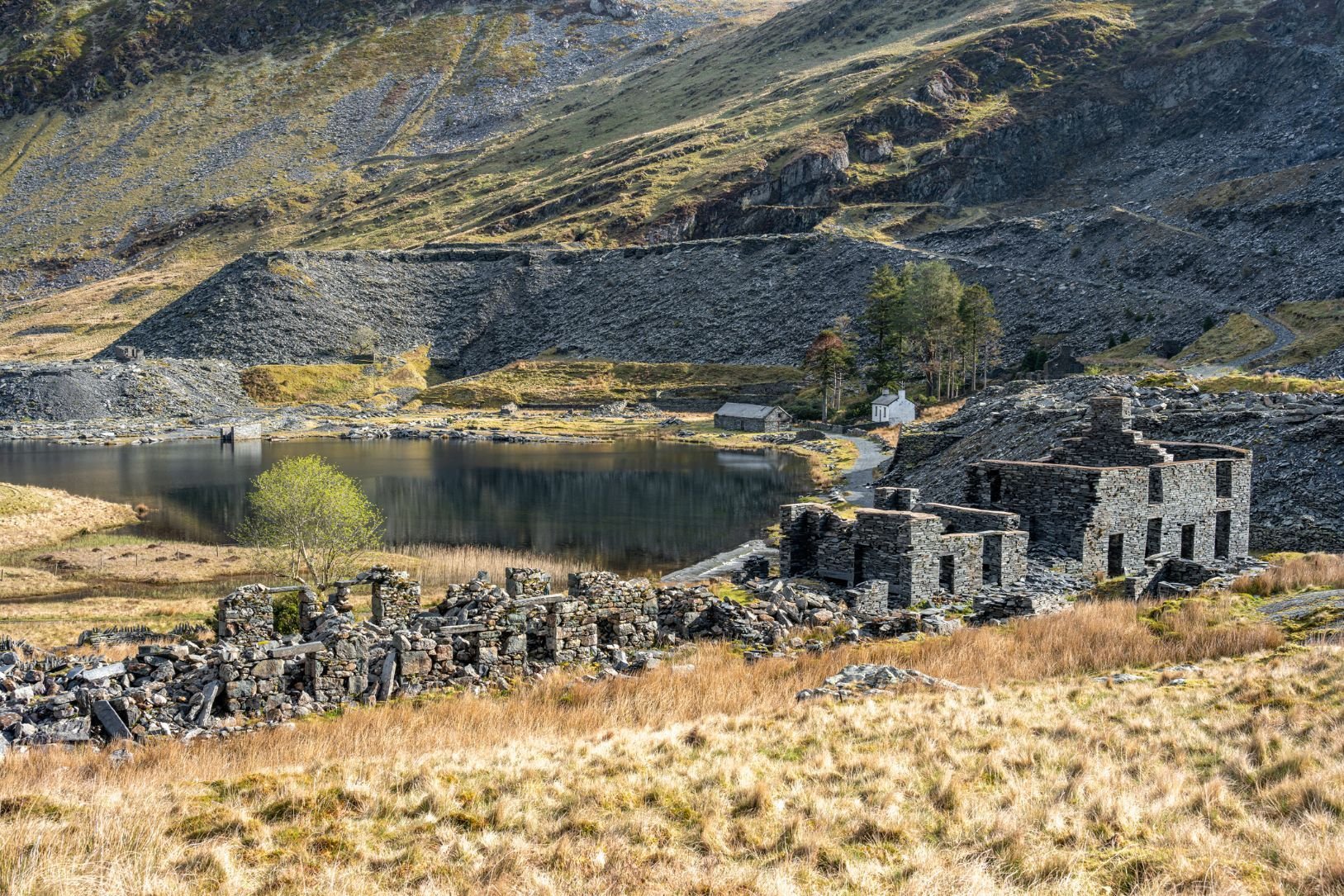
Cycling UK recommends using a mountain bike for the Traws Eryri, although there are several parts of it along gravel tracks and tarmac roads.
“You’ll want those really low gears - there’s lots of very Welsh 20% gradients,” Sophie says. “There are a few short stretches which are really rough and rocky and technical - you could always walk them if you don’t feel happy with it. The people I rode it with were all glad they’d bought their mountain bikes.”

Cyclists will be travelling through some of the quieter parts of the national park, which will help divert traffic away from the busy area around Yr Wyddfa. This will bring economic benefit to towns and villages which tend to see less tourist traffic.
“We found when we developed King Alfred’s Way, in southern England, that people spend an average of £84 a day on the trail,” Sophie says. “We’ve had about 5000 people already sign up to say they’re interested in riding the route. So if they all rode it, that would be about £1.5 million going into the local economy, which would be great.”
Read more:
- Discovering Ecuador's 22-Mile Quilotoa Loop: A Guide
- The New 266km Bikepacking Route Through the Cairngorms
- The 258-Mile Bikepacking Route on the Yorkshire Coast
- The 675km Hiking Trail Through the Heart of Jordan
Inspired? Check out our Cycling Adventures collection for more ride ideas.


